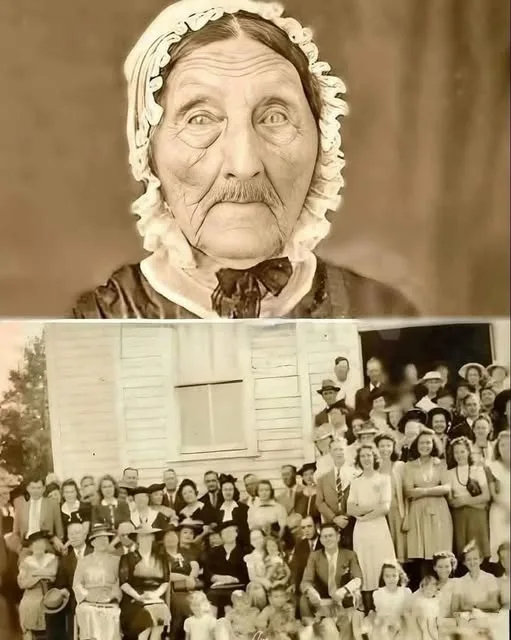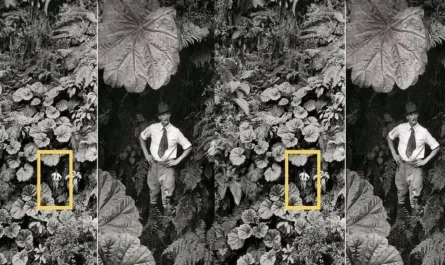In the small town of Shuya, Russia, during the 18th century, a woman named Valentina Vassilyeva achieved what seems like the impossible: giving birth to 69 children over 27 pregnancies. Born in 1707 and passing away in 1782, Valentina holds the Guinness World Record for the most children born to one mother. With 16 pairs of twins, seven sets of triplets, and four sets of quadruplets, her story is a jaw-dropping testament to human fertility, resilience, and the unique historical context of her time. Let’s explore the life of this remarkable woman, the societal backdrop of her era, and the enduring fascination with her record. 🌍

A Life of Extraordinary Fertility
Valentina Vassilyeva was the first wife of Feodor Vassilyev, a peasant farmer from Shuya, a town about 250 kilometers east of Moscow. Living in rural Russia during the 1700s, the couple navigated a world without modern birth control, where large families were common and often seen as a blessing. But Valentina’s reproductive record far surpassed the norm, even for her time. Between approximately 1725 and 1765, she gave birth 27 times, producing:
-
16 pairs of twins (32 children)
-
7 sets of triplets (21 children)
-
4 sets of quadruplets (16 children)
This staggering total of 69 children, all reportedly surviving infancy, earned Valentina a place in the Guinness World Records as the most prolific mother in history. While the sheer number of births—especially multiple births—seems almost unbelievable today, historical records suggest her story is credible, though not without debate.
Historical Context: A World of Large Families
Valentina’s era was vastly different from our own. In 18th-century Russia, childbirth was a central part of life, driven by religious, cultural, and economic factors:
-
Religious Duty: The Russian Orthodox Church emphasized procreation as a divine obligation, encouraging families to have as many children as possible. Large families were seen as a sign of God’s favor.
-
Societal Expectations: In rural peasant communities, children were valuable assets, contributing to farm work and household tasks from a young age. High infant mortality rates also meant that families often had many children to ensure some survived to adulthood.
-
No Birth Control: Modern contraception didn’t exist, and fertility was largely left to nature. Women like Valentina, who were fertile for decades, could bear children throughout their reproductive years.
-
Multiple Births: While rare today, twins, triplets, and quadruplets were not unheard of, though Valentina’s frequency of multiple births is exceptional. Some researchers speculate she may have had a genetic predisposition to hyperovulation, increasing her likelihood of conceiving multiples.
Valentina’s 27 pregnancies over roughly 40 years suggest she was pregnant almost continuously, with an average of one pregnancy every 1.5 years. This grueling cycle, combined with the physical demands of raising dozens of children in a peasant household, highlights her extraordinary resilience.
Documenting the Unbelievable
The story of Valentina’s 69 children comes primarily from historical records preserved by the Monastery of Nikolsk near Shuya. In 1783, Feodor Vassilyev reportedly petitioned the Russian government for financial assistance, citing his massive family. The monastery’s records detailed the family’s births, noting that most of the children survived infancy—an impressive feat given the high infant mortality rates of the time (often 30–50%). The account was later published in The Gentleman’s Magazine in London in 1783, bringing international attention to the Vassilyev family.
The Guinness World Records officially recognizes Valentina’s record, though some skepticism persists. Critics argue that the biological and logistical challenges of 27 pregnancies, especially with so many multiples, strain credulity. For example:
-
Biological Feasibility: Producing 69 children, including 55 from multiple births, would require exceptional fertility and health. However, cases of hyperovulation and historical records of other large families (e.g., 20–30 children) lend plausibility.
-
Survival Rates: The claim that most of the children survived infancy is remarkable for the 18th century, when sanitation and medical care were limited. Some suggest the family’s rural lifestyle and access to fresh food may have helped.
-
Verification Challenges: Primary records are scarce, and the story relies on secondary sources like the monastery’s report and contemporary publications. Modern historians cannot fully verify every detail, but the consistency of accounts supports the claim.
Despite these debates, Valentina’s record stands unchallenged, and her story continues to captivate.
Life in Shuya: The Vassilyev Family
Little is known about Valentina’s personal life beyond her reproductive achievements. As a peasant wife, she likely spent her days managing a bustling household, tending to crops or livestock, and raising her children alongside Feodor. After Valentina’s death in 1782, Feodor remarried, reportedly fathering another 18 children with his second wife, bringing his total to 87 children—a record of its own!
The Vassilyev children, born into a rural, agrarian society, would have contributed to the family’s survival through farm work. Some accounts suggest the family’s size drew local fame, possibly attracting support from the community or authorities. The sheer logistics of feeding, clothing, and housing 69 children in a peasant household boggle the mind, making Valentina’s story as much about endurance as fertility.
Cultural and Scientific Fascination
Valentina’s record has sparked interest among historians, scientists, and the public:
-
Biological Marvel: Scientists study cases like Valentina’s to understand extreme fertility. Her frequent multiple births suggest a rare genetic trait, possibly linked to hyperovulation, which causes the release of multiple eggs during ovulation. Modern examples, like the Dionne quintuplets or octuplet births, pale in comparison to her 27 pregnancies.
-
Historical Insight: Her story sheds light on 18th-century rural life, where large families were a survival strategy. It also highlights the physical toll of repeated pregnancies on women, especially without modern medical care.
-
Cultural Legacy: Valentina’s record, immortalized by Guinness, has made her a symbol of human potential and resilience. Her story often appears in discussions of fertility, family dynamics, and historical oddities.
Challenges and Controversies
While Valentina’s record is celebrated, it raises questions:
-
Health Implications: Repeated pregnancies, especially multiples, would have been physically exhausting. Without modern obstetrics, Valentina’s health and survival through 27 births are remarkable.
-
Documentation Gaps: The reliance on 18th-century records, some secondhand, leaves room for skepticism. Modern researchers lack access to birth certificates or medical records to confirm every detail.
-
Ethical Reflection: Today, such a large family might raise concerns about resource strain or maternal health, but in Valentina’s time, these were not societal priorities.
Why Valentina’s Story Endures
Valentina Vassilyeva’s life is a testament to the extremes of human biology and the resilience of women in a challenging era. Her 69 children, born through 27 pregnancies, represent a feat that seems almost mythical yet is grounded in historical records. Her story invites us to marvel at the past, reflect on the cultural forces that shaped her life, and appreciate the strength of a mother who defied the odds.
Have you ever heard of a family this large? What do you think it was like to raise 69 children in 18th-century Russia? Share your thoughts, and let’s keep Valentina’s incredible legacy alive! 👨👩👧👦
Note: Information is based on historical accounts, Guinness World Records, and studies of 18th-century demographics available up to July 21, 2025. Want to explore recent discussions about Valentina on X or dive deeper into the science of multiple births? Just let me know!





